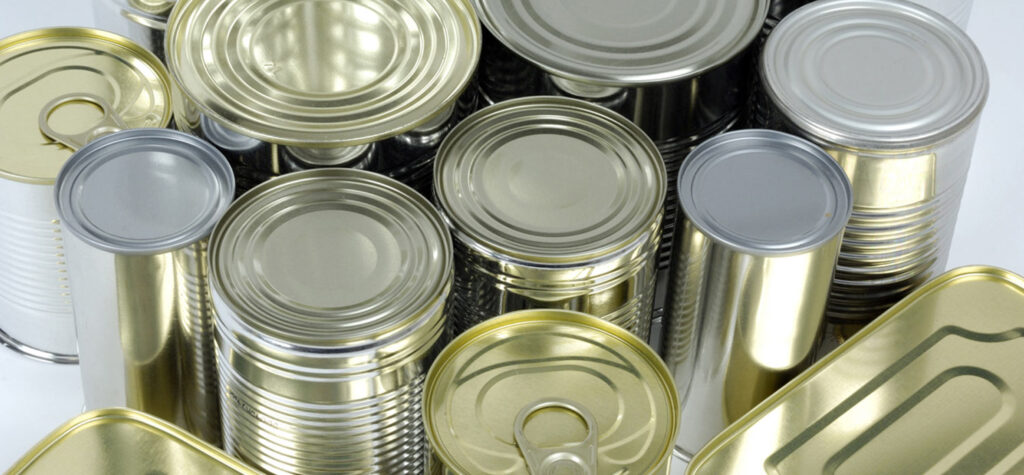Manner and Scope of the Material’s Use
- Tinplate or packaging steel is used in great measure in the packaging sector, for example for packaging food, beverages, aerosols, paints and varnishes. The material is distinguished by its impermeability to light and air and its unbreakability.
- The storage of food in cans works without energy consumption.
- The consumption of tinplate for private end consumption packaging in 2020 was 528,200 tonnes (source: UBA).
Material Use During Manufacturing
- The tinplate packaging collected from the private end-user and supplied to the recycling systems is reused in steel production in Germany for the production of new steel. Technically, it is not possible to produce high-quality flat steels, the preliminary product of tinplate, without the use of this scrap. Each ton of steel also contains scrap. In Germany, one can see a recycling rate of almost 100 % as a closed material cycle.
- Tinplate is “multirecycled”, as the material can be used over several life cycles without loss of quality. The inherent properties remain intact (source: TU Berlin 2012). Industry insiders therefore speak of a “permanent material”.
- The recovery of one tonne of steel and iron scrap saves the following primary resources: 1.5 tonnes of iron ore, 0.65 tonnes of coal and 0.3 tonnes of limestone. In Germany, the recycling of tinplate saves some 1 million tonnes of primary raw materials, a considerable contribution to the national and European resource strategy. Moreover, the use of tinplate scrap in steel production reduces energy consumption by up to 75 %.
Collection / Sorting / Recycling
- Once collected, tinplate is completely recycled.
- In Germany, tinplate packaging is covered nationwide across the dual systems and almost everywhere in the collection system. The significantly smaller portion of the deposit steel beverage cans is separately gathered by the deposit system of the DPG Deutsche Pfandsystem GmbH. Technically, this separate gathering is not required since the steel beverage cans are subsequently recycled together with the tinplate packs from dual systems.
- Through the nationwide equipping of sorting systems with magnetic separators, tinplate is sorted out as an independent fraction with a high sorting accuracy.
- In 2020, tinplate in Germany generated a recycling rate (from private final consumption) of 91.9 % (source: UBA).
- Tinplate is 100 % recyclable – as often as wanted and without compromising quality. “Downcycling”, a recycling with a constant loss of quality, does not occur with tinplate.
Development / Background / Outlook
- The German steel industry has continuously improved its processes, including the reduction of energy consumption by 40 % over the last 50 years. In the course of the past decades, product and process innovations also led to a decline in energy consumption during the subsequent production of tinplate.
- The focus of the innovation activities for packaging is the continuous further development to lower material thicknesses. A food can with a diameter of 73 millimeters is now 45 % lighter than in 1974.
- A 0.33-liter steel beverage can weighs 32 % less than in 1985.
UBA Umweltbundesamt (2022): Aufkommen und Verwertung von Verpackungsabfällen in Deutschland im Jahr 2022.



